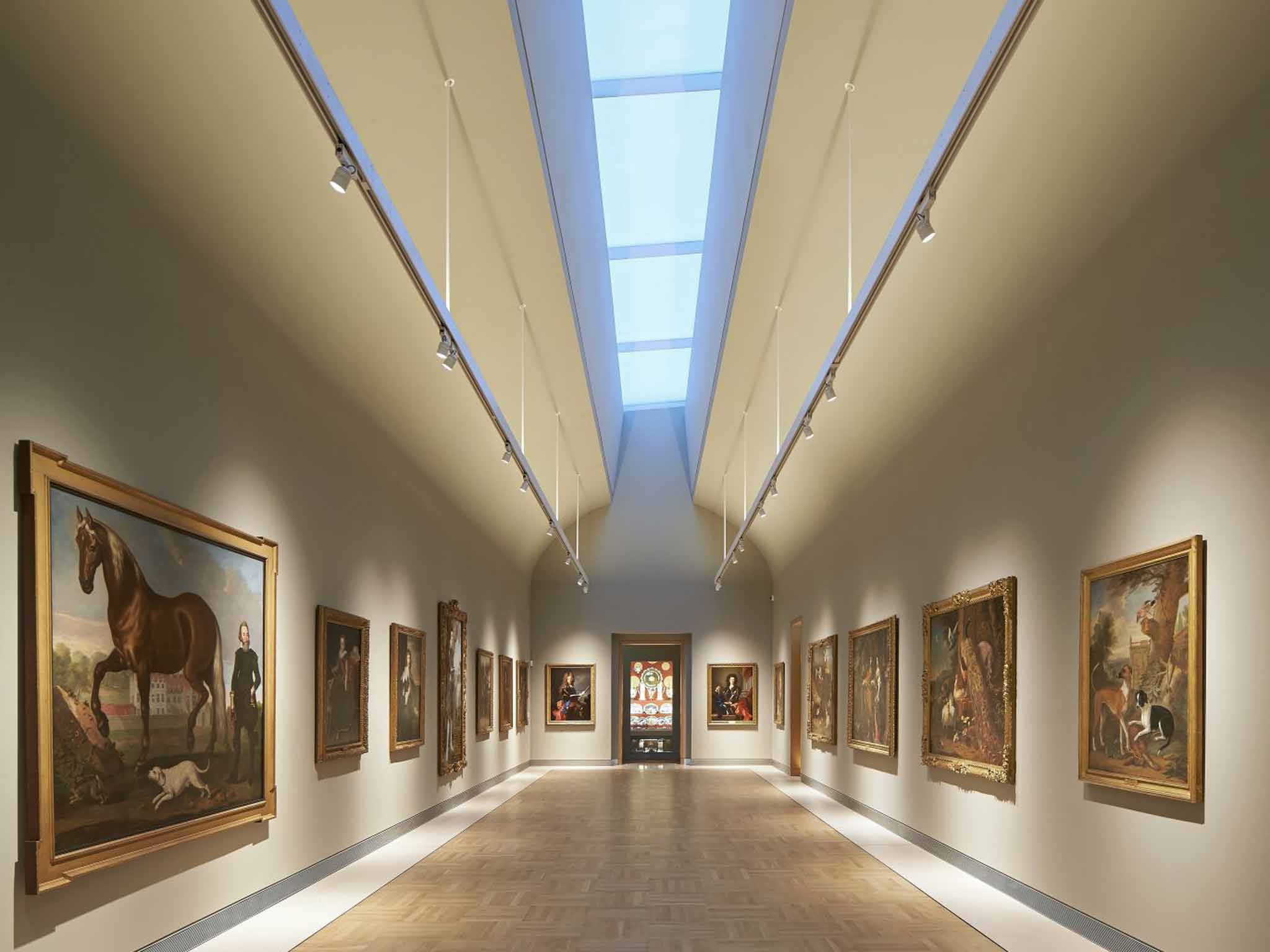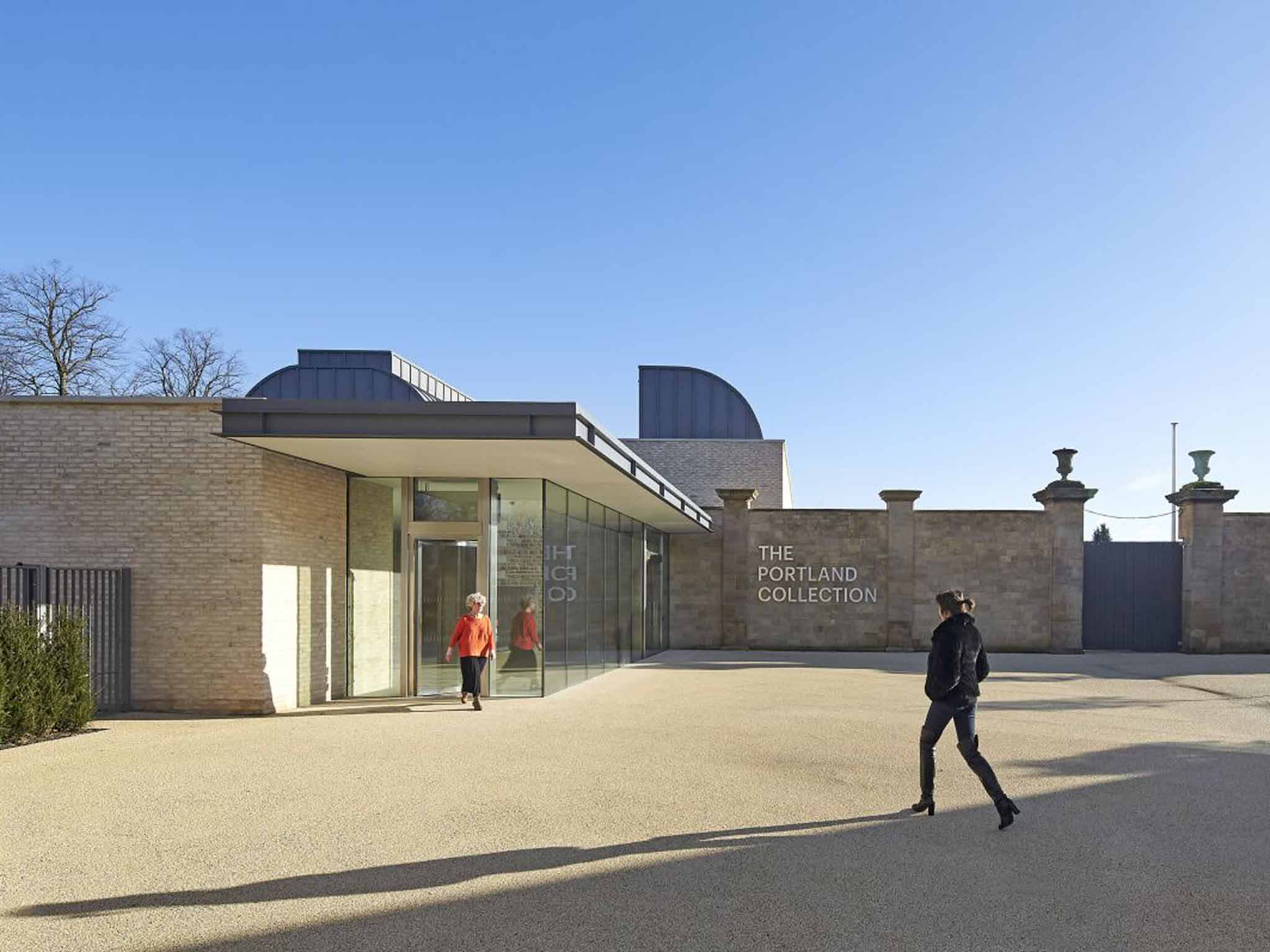The Harley Gallery on the Welbeck Abbey estate: A mixture of the pleasing and the problematic for the Portland collection
As a composition, the design of the Harley is assured, says Jay Merrick

Your support helps us to tell the story
From reproductive rights to climate change to Big Tech, The Independent is on the ground when the story is developing. Whether it's investigating the financials of Elon Musk's pro-Trump PAC or producing our latest documentary, 'The A Word', which shines a light on the American women fighting for reproductive rights, we know how important it is to parse out the facts from the messaging.
At such a critical moment in US history, we need reporters on the ground. Your donation allows us to keep sending journalists to speak to both sides of the story.
The Independent is trusted by Americans across the entire political spectrum. And unlike many other quality news outlets, we choose not to lock Americans out of our reporting and analysis with paywalls. We believe quality journalism should be available to everyone, paid for by those who can afford it.
Your support makes all the difference.The new Harley Gallery on the 15,000-acre Welbeck Abbey estate in Nottinghamshire has been designed to present the Portland collection, amassed across four centuries, in a coherent sequential narrative for the first time. The collection offers important works – among them, Michelangelo's The Madonna of Silence, van Dyck's First Earl of Strafford, equestrian studies by George Stubbs, and portraits by John Singer Sargent. And these are supported by glittering ducal valuables and curios, including the Portland Tiara and the pearl earring worn by Charles I at his execution in 1649.
The gallery's architecture, built on a tight £6m budget, is generally impressive. And yet we experience the works in two conflicting ways: rather delightfully, and rather infuriatingly.
The qualities of light, space, and atmosphere are what make or break art galleries, and the way architects succeed in this varies greatly. At the Louisiana museum of art in Denmark, for example, every gallery has a different shape and atmosphere – a thoroughly stimulating promenade; the Hepworth Wakefield is a brilliant exercise in subtle shifts of light; the small Jerwood gallery in Hastings ensconces art in a kind of heightened domestic environment.
One of the inspirations for the architecture of the Harley Gallery, designed by Hugh Broughton, the British architect who also designed the new ice station at the South Pole, was the Kimball Art Gallery in Fort Worth, Texas. Its cycloid barrel-vaults – think of a very slightly squashed semi-circle – have become iconic in the world of architecture. The Kimball's architect, Louis Kahn, was one of the greats, and a master of engrossing compositions of light and shadow in relation to space.
The Long Gallery at the Harley is a well-crafted homage to those cycloid vaults, and the art displayed in this room looks wonderful. The paintings, which range from Hyacinthe Rigaud's smug-looking First Earl of Portland to the surreally proportioned, A Horse Before the East Front of Welbeck Abbey, by an anonymous 17th-century artist of the proto-My Little Pony school, hang on French-grey walls that arc gently inwards as they rise to a raised, north-angled skylight that runs the length of the room.
It's a fine piece of design. The combination of natural light and two slim suspended lines of artificial lighting work with the shape of the vault to produce a beautifully lucent atmosphere in a thoroughly graceful room.
Parallel with the Long Gallery is the Treasury Gallery, and it could not be more different – and problematic. A half barrel-vault runs down one side, drawing in shutter-controlled light, and the gallery has been formed into three different spaces: full-height rooms at the ends, with a low-ceilinged segment in the middle. There are dark red walls, display cases, and a central inner sanctum containing a peculiarly grave array of miniature portraits selected by Peter Blake, an aficionado of the genre. These smaller spaces were quite specifically designed to create an intimate 21st-century version of grand 19th-century rooms.

But the intimacy of these spaces has been quite specifically ruptured by lighting tracks so obtrusive that they jab into sightlines; the gaze twitches between angles of white metal and, say, Philip de Laszlo's ravishing portrait of Winifred, the sixth Duchess of Portland, who has, as it were, been caught dead in an Ikea moment. Why weren't the metal lighting tracks fitted flush into the ceiling and painted the same matt white colour? The lighting is likely to refitted in two or three years, but in the meantime it spoils the atmosphere of these rooms.
The technical kitting out of the Treasure Gallery had nothing to do with Broughton; nor did the design of the oddly styled display cases, which are presumably supposed to suggest weighty quasi-retro furniture. The largest case, containing delicate historic manuscripts, looks more suitable for Damien Hirst's lugubrious shark.
These are rankles, rather than fatal flaws. As a composition, the design of the Harley is assured – a calmly configured modernist object inserted within the sandstone walls of the Tan Gallop, which was once a glass-roofed equestrian exercise yard 1270ft long and 112ft wide, and surpassed in size only by Moscow's 19th-century equivalent, the Manege riding school.
The Harley's zinc-covered vaults rise from walls faced with creamy Danish bricks, and the physical and formal contrast between the weathered sandstone enclosure of the Gallop and the sharply-tailored gallery block is surprisingly satisfying.
The design of the Harley's entrance pavilion – a clean-cut, largely glazed oblong with a flat roof – is intelligently minimalist. Broughton, equally smartly, put the washroom segment under the reception area, ensuring that the building remained relatively compact and unfussy in a setting with other historic buildings nearby.
The phrase “build-quality” may not set the pulse racing, but it matters greatly in new buildings in settings such as the Welbeck estate, where the architecture is largely a mixture of Renaissance and classical styles, with occasional Gothic Revival features.
Given the meagre budget for the Harley Gallery, the build-quality and most of its finishes and details are impressive. The finessed elements of Broughton's design include the joinery of the very tall door-casings in the galleries, which use unusually straight-grained oak, and the batten-rolled seams on the zinc roof.
Excellent build-quality on the Welbeck estate was certainly a given, historically. In his 1896 History of Nottinghamshire, Cornelius Brown wrote about the stream of extraordinary building projects – above and below ground – commissioned by William Cavendish-Scott-Bentinck, the eccentric fifth Duke of Portland.
Brown describes the workmanship of the underground, asphalt-lined apartments as “curiously perfect”. The enormous doors were “so perfectly hung that a child could open or shut them, and they close with the beautiful precision of those in the private dining rooms of Windsor Castle – that is to say, as accurately as a Scotch snuff-box.” Hugh Broughton's art-box may not quite be up to those sniffy-snuffy standards, but you know you are in a well-made building.
A director of the Welbeck estate, William Parente, is the nephew of the final Duchess of Portland, and refers to the Harley as “a very modest thing”, which is rather disingenuous. Under his watch, the development of the estate has been considerable and has involved flows of internal and external funding which have produced a range of facilities and attraction, including an artisanal cooking school, B&Bs, farm shop, and conference space.
And so the decision to build the Harley was logical, and it will probably benefit from the depressing fact that one in five regional art galleries and museums closed, or reduced its offer, during 2015. The Museums Association expects more closures, especially of local authority-supported galleries and museums. More than 40 have died since 2010, with 11 perc ent of those that remain threatened with closure for financial reasons.
That regional cultural gloom is dispelled at Welbeck. The Harley Gallery is more than a modest thing. Apart from those nasty bits of metal in its Treasures Gallery, this is an admirable addition to the cultural scene in the midsection of Britain. µ
Join our commenting forum
Join thought-provoking conversations, follow other Independent readers and see their replies
Comments